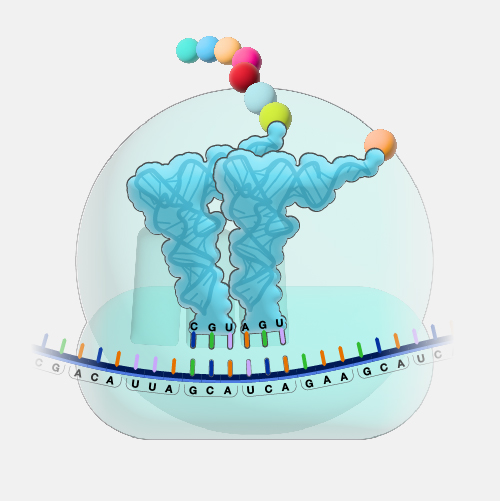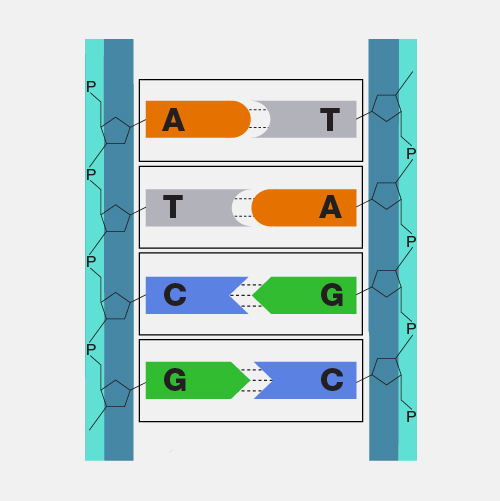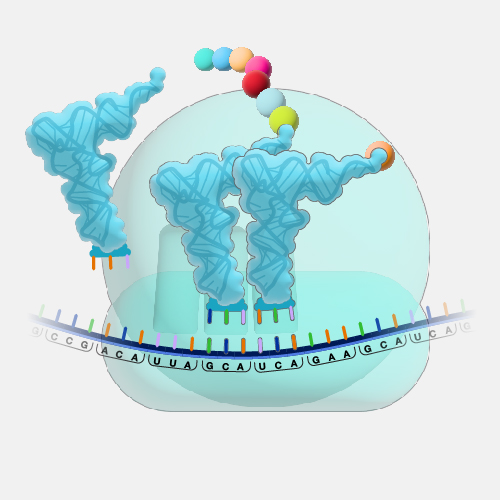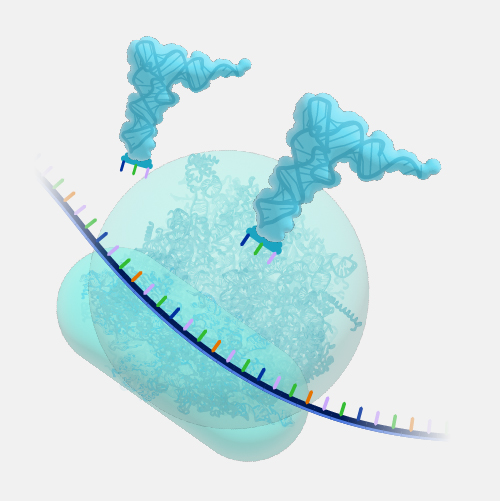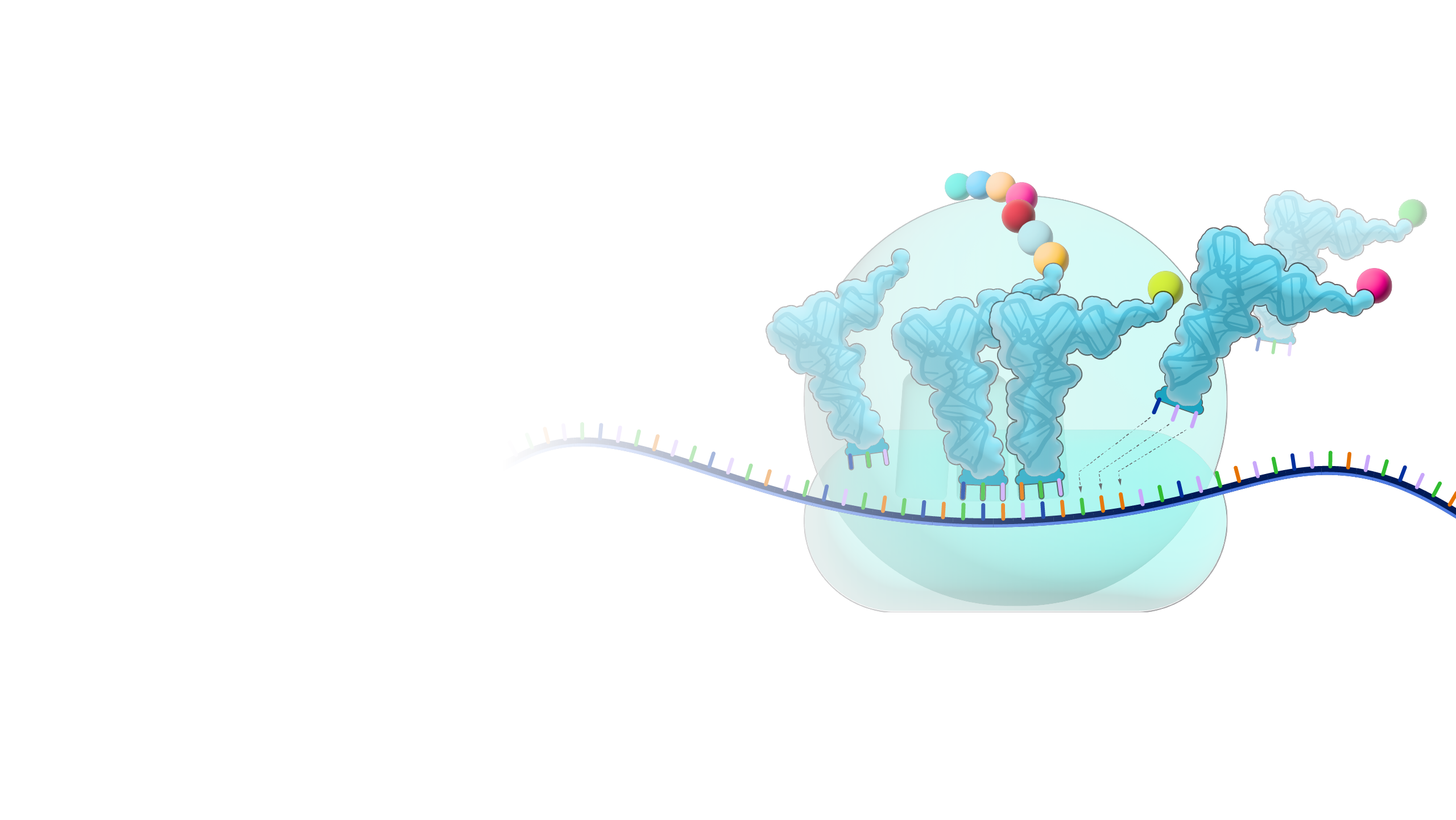
Transfer RNA (tRNA)
Definition
Transfer RNA (abbreviated tRNA) is a small RNA molecule that plays a key role in protein synthesis. Transfer RNA serves as a link (or adaptor) between the messenger RNA (mRNA) molecule and the growing chain of amino acids that make up a protein. Each time an amino acid is added to the chain, a specific tRNA pairs with its complementary sequence on the mRNA molecule, ensuring that the appropriate amino acid is inserted into the protein being synthesized.
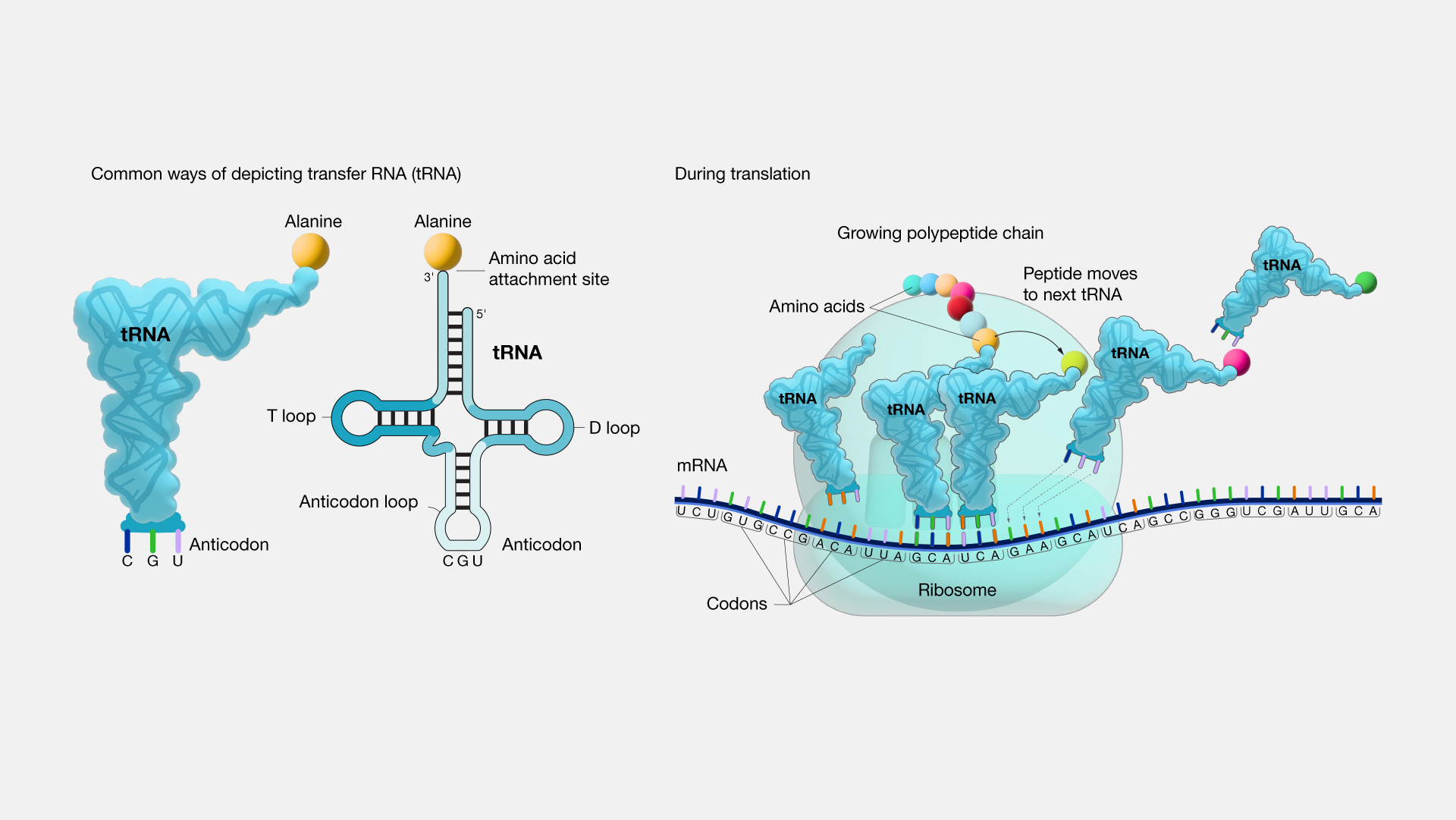
Narration
Transfer RNA or tRNA. So tRNAs are in a way one of the molecules that I find really fascinating. You know, imagine a chef, a master chef cooking in a kitchen. But, of course, they're so busy and so involved that they need someone to bring them the appropriate ingredients so that they can cook up their fabulous meal. So really, when we think about the process in which an amino acid is constructed, the DNA, of course, is the code. So in a chef analogy, it would be the recipe. The chef, themselves, is the ribosomal machinery that's actually creating the meal. But really, the tRNA is that very, very important person in the kitchen that goes and fetches the specific amino acids that are needed as a protein gets constructed according to the code of DNA. So this is a very particular kind of RNA that has a unique job of making sure that just the right amino acid is transferred, or that's why it's tRNA, into the growing chain of the protein as it gets constructed.


